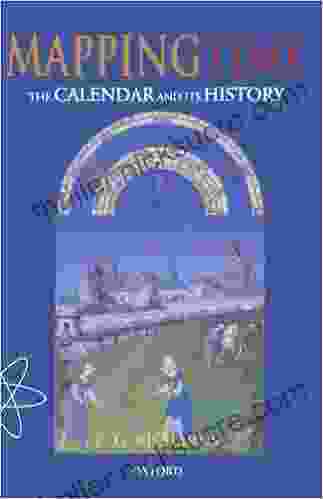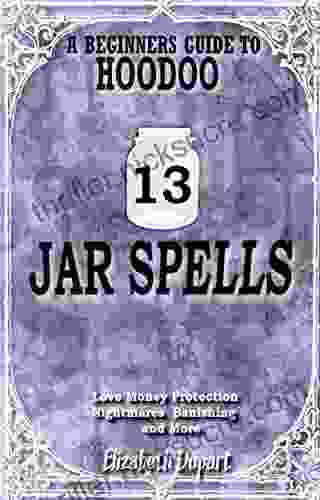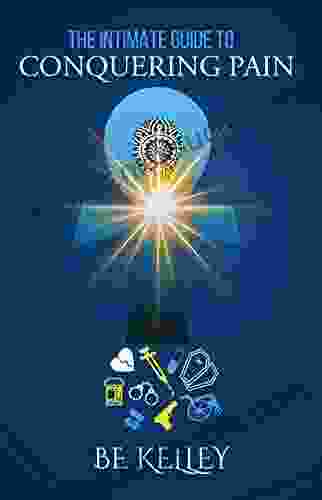Mapping Time: Unraveling the Enigmatic History of Calendars

From the earliest civilizations to the present day, calendars have played a pivotal role in shaping human existence. They have guided our agricultural practices, regulated religious observances, and provided a framework for understanding the passage of time. This comprehensive article delves into the fascinating history of calendars, tracing their evolution from rudimentary beginnings to the sophisticated systems we rely on today.
Origins in Celestial Observations
The earliest calendars emerged thousands of years ago as rudimentary attempts to track the celestial cycles that influenced life on Earth. Ancient farmers observed the regular waxing and waning of the moon, using its phases to mark the passage of months. They also noticed the apparent movement of the sun across the sky, which gave rise to the concept of a year.
4.7 out of 5
| Language | : | English |
| File size | : | 8951 KB |
| Text-to-Speech | : | Enabled |
| Screen Reader | : | Supported |
| Word Wise | : | Enabled |
| Print length | : | 460 pages |
| Lending | : | Enabled |
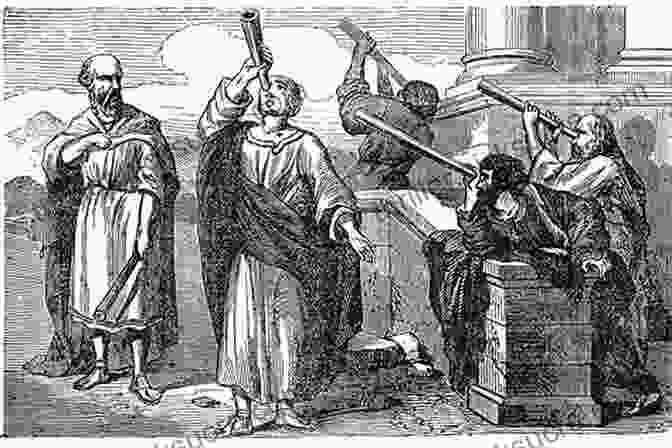
The first known calendars were lunar-based, with months defined by the lunar cycle. However, these calendars proved inaccurate as they did not account for the discrepancy between the lunar and solar years. To address this issue, civilizations transitioned to solar-based calendars, which aligned the year with the Earth's orbit around the sun.
The Egyptian Solar Calendar
One of the most influential early calendars was the solar calendar developed by the ancient Egyptians around 3,000 BC. This calendar consisted of 12 months, each containing 30 days. It was based on the observation of the star Sirius, which marked the beginning of the annual Nile flood. The Egyptian calendar played a crucial role in agricultural planning and religious festivals.
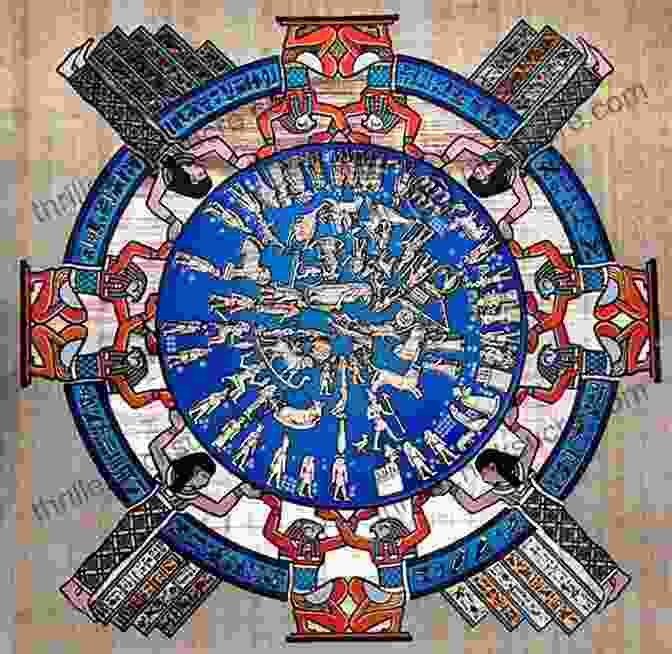
The Roman Calendar
The Roman calendar, initially influenced by the Etruscan lunar calendar, underwent significant reforms under various rulers. In 46 BC, Julius Caesar introduced the Julian calendar, which consisted of 365 days and a 30-day leap year every fourth year. The Julian calendar was widely adopted throughout the Roman Empire and later became the foundation for the modern Gregorian calendar.
The Gregorian Calendar
The Gregorian calendar, named after Pope Gregory XIII, was introduced in 1582 to address the slight inaccuracies in the Julian calendar. This calendar eliminated three leap years every 400 years, resulting in a more precise alignment with the Earth's orbit. The Gregorian calendar is the most widely used calendar today, with only a few exceptions.
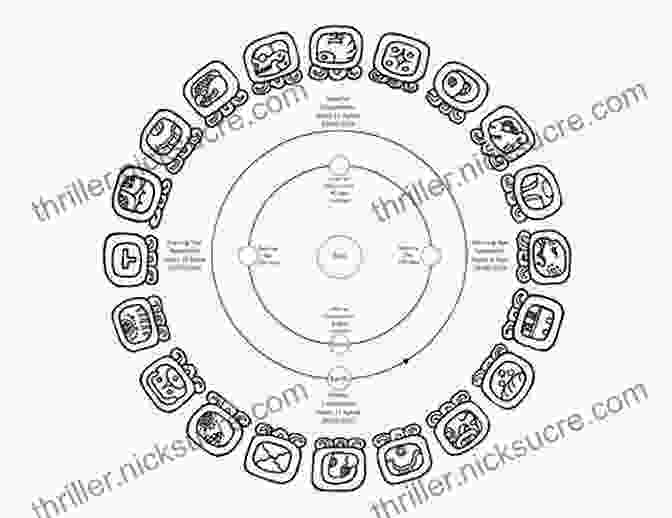
The Evolution of Timekeeping
Alongside the development of calendars, humans have continuously refined the tools and techniques for measuring time. From rudimentary sundials to complex clocks, each innovation has expanded our understanding of the passage of time. In the 21st century, atomic clocks provide the most precise measurement of time, with applications in navigation, telecommunications, and scientific research.
The evolution of timekeeping has been closely intertwined with the development of calendars, as both have enabled us to structure our lives and activities in a coherent and meaningful way.
The Cultural Significance of Calendars
Calendars are not merely practical tools for tracking time but also carry profound cultural significance. They reflect cultural beliefs, traditions, and social norms. Holidays and festivals are often tied to specific dates on the calendar, connecting communities through shared celebrations and observances.
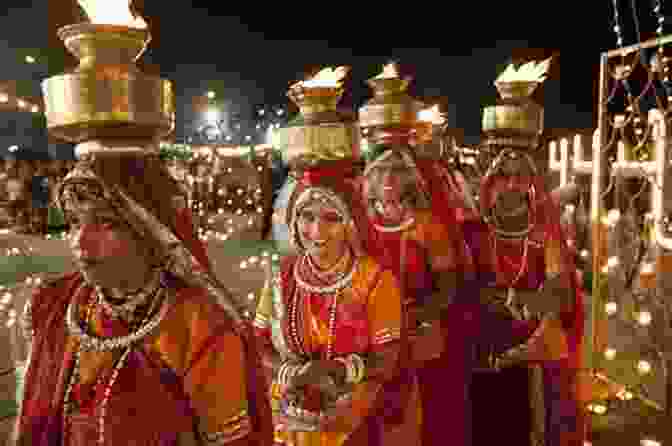
Diverse cultures have developed unique calendars that align with their specific needs and worldviews. For example, the Mayan calendar, known for its intricate interlocking cycles, served as a navigational and spiritual guide for the ancient Mayan civilization.
The Future of Calendars
As technology continues to advance, it is possible that calendars may evolve to incorporate new dimensions and functionalities. Digital calendars, online scheduling tools, and artificial intelligence are already transforming the way we manage our time and interact with calendars.
The future of calendars is uncertain, but it is likely to be shaped by the convergence of technological innovation with the enduring human need to understand and structure time.
The history of calendars is a testament to the human ingenuity and our innate desire to understand the passage of time. From the rudimentary lunar-based calendars of ancient civilizations to the sophisticated Gregorian calendar we use today, calendars have played a vital role in shaping human history and culture. As the world continues to evolve, calendars will continue to adapt and evolve, reflecting our changing needs and aspirations.
4.7 out of 5
| Language | : | English |
| File size | : | 8951 KB |
| Text-to-Speech | : | Enabled |
| Screen Reader | : | Supported |
| Word Wise | : | Enabled |
| Print length | : | 460 pages |
| Lending | : | Enabled |
Do you want to contribute by writing guest posts on this blog?
Please contact us and send us a resume of previous articles that you have written.
 Fiction
Fiction Non Fiction
Non Fiction Romance
Romance Mystery
Mystery Thriller
Thriller SciFi
SciFi Fantasy
Fantasy Horror
Horror Biography
Biography Selfhelp
Selfhelp Business
Business History
History Classics
Classics Poetry
Poetry Childrens
Childrens Young Adult
Young Adult Educational
Educational Cooking
Cooking Travel
Travel Lifestyle
Lifestyle Spirituality
Spirituality Health
Health Fitness
Fitness Technology
Technology Science
Science Arts
Arts Crafts
Crafts DIY
DIY Gardening
Gardening Petcare
Petcare David Mcclung
David Mcclung Michael Ruhlman
Michael Ruhlman Sara Gaviria
Sara Gaviria Jonathan H Turner
Jonathan H Turner Mark Powell
Mark Powell Elizabeth Dupart
Elizabeth Dupart David Wootton
David Wootton Kerry Mcdonald
Kerry Mcdonald Richard A Jaffe
Richard A Jaffe Carol Dawson
Carol Dawson Chukwuma Eleodimuo
Chukwuma Eleodimuo Doug Peacock
Doug Peacock Matt Schifferle
Matt Schifferle Mark Johnston
Mark Johnston John Jeffries Martin
John Jeffries Martin Joseph Ewing
Joseph Ewing Jaime Flowers
Jaime Flowers Carol Kaesuk Yoon
Carol Kaesuk Yoon Melissa Trevathan
Melissa Trevathan Brion Toss
Brion Toss Ned Mcintosh
Ned Mcintosh Carlo Zen
Carlo Zen Janice L Raymond
Janice L Raymond Jennifer Comeaux
Jennifer Comeaux Bruce Lee
Bruce Lee Dr Faith G Harper
Dr Faith G Harper Jp Lepeley
Jp Lepeley Robert Ullman
Robert Ullman Brian Everitt
Brian Everitt Jacques Vallee
Jacques Vallee Richard Blais
Richard Blais Neil Postman
Neil Postman Sara Elliott Price
Sara Elliott Price Pat Manocchia
Pat Manocchia Richard Post
Richard Post Cecelia Ahern
Cecelia Ahern Nora Roberts
Nora Roberts Jhenah Telyndru
Jhenah Telyndru Rory D Nelson
Rory D Nelson Mark William
Mark William Joanne M Flood
Joanne M Flood Tim Falconer
Tim Falconer Warren Hansen
Warren Hansen Jimmie Holland
Jimmie Holland Joanna Sayago Golub
Joanna Sayago Golub John Cooper
John Cooper Sonja Schwartzbach
Sonja Schwartzbach David Hatcher Childress
David Hatcher Childress Roman Gurbanov
Roman Gurbanov Robert Wright
Robert Wright Derick Lugo
Derick Lugo Erin Mckittrick
Erin Mckittrick Steve Guest
Steve Guest Mike Adams
Mike Adams Ji Kim
Ji Kim Khalid Khashoggi
Khalid Khashoggi James Dean
James Dean Frederick L Coolidge
Frederick L Coolidge Celina Grace
Celina Grace Kate Mcmillan
Kate Mcmillan Brian R King
Brian R King Tim Dunn
Tim Dunn Karen Ward Mahar
Karen Ward Mahar F R Lifestyle
F R Lifestyle Jay Asher
Jay Asher E G Richards
E G Richards David Barrett
David Barrett Joan Nathan
Joan Nathan Lucy Hopping
Lucy Hopping Sean Michael Wilson
Sean Michael Wilson Matthew Desmond
Matthew Desmond Kaylene Yoder
Kaylene Yoder Wilborn Hampton
Wilborn Hampton David Murray
David Murray John M Taylor
John M Taylor Caitlyn Dare
Caitlyn Dare James Miller
James Miller Mark Lazerus
Mark Lazerus Zigzag English
Zigzag English G E R Lloyd
G E R Lloyd Sriman Sharma
Sriman Sharma Carol Walters
Carol Walters Masaaki Kijima
Masaaki Kijima Karen E Mcconnell
Karen E Mcconnell Jameswesley Rawles
Jameswesley Rawles Harry Vardon
Harry Vardon Julie Cangialosi
Julie Cangialosi Gerald L Schroeder
Gerald L Schroeder Avery Faigenbaum
Avery Faigenbaum Phil Williams
Phil Williams James Floyd Kelly
James Floyd Kelly Marc J Reilly
Marc J Reilly Karl F Kuhn
Karl F Kuhn Jonti Marks
Jonti Marks Sujit Sivasundaram
Sujit Sivasundaram Christopher Ketcham
Christopher Ketcham Ivan Savov
Ivan Savov Kyle Rohrig
Kyle Rohrig T J Tomasi
T J Tomasi 1st Ed 2018 Edition Kindle Edition
1st Ed 2018 Edition Kindle Edition Emily Lauren Dick
Emily Lauren Dick Tadashi Yoshimura
Tadashi Yoshimura George Olsen
George Olsen Inger Mewburn
Inger Mewburn Victor A Bloomfield
Victor A Bloomfield Leslie Valiant
Leslie Valiant Keith Ammann
Keith Ammann Gerson S Sher
Gerson S Sher Bryan Berard
Bryan Berard Rich Osthoff
Rich Osthoff Kent Hoffman
Kent Hoffman Geoffrey Simpson
Geoffrey Simpson Marco Polo
Marco Polo Seb Falk
Seb Falk D Levesque
D Levesque J R Harris
J R Harris Fritjof Capra
Fritjof Capra Cassandra Overby
Cassandra Overby Kusha Karvandi
Kusha Karvandi Daniel Vaughan
Daniel Vaughan Michael Omi
Michael Omi Vincent W Davis
Vincent W Davis Colleen Doyle Bryant
Colleen Doyle Bryant Neil S Jacobson
Neil S Jacobson Mary Strand
Mary Strand Tom Cunliffe
Tom Cunliffe Megan Smolenyak
Megan Smolenyak Michael Sean Comerford
Michael Sean Comerford Jodi Aman
Jodi Aman Laurie A Watkins
Laurie A Watkins Elwyn Hartley Edwards
Elwyn Hartley Edwards Jacob Boehme
Jacob Boehme Lisa Druxman
Lisa Druxman Lana Peek
Lana Peek Rick Steves
Rick Steves Elliot Davis
Elliot Davis Steve Schwartz
Steve Schwartz Jeannette De Wyze
Jeannette De Wyze Toni Weschler
Toni Weschler Kathleen Bartholomew
Kathleen Bartholomew Natalia Ilyin
Natalia Ilyin Colette Harris
Colette Harris Esther Hicks
Esther Hicks Nicholas S Howe
Nicholas S Howe Richard Hingley
Richard Hingley Alan D Moore
Alan D Moore David Levithan
David Levithan Phyllis Books
Phyllis Books Patty Wipfler
Patty Wipfler Paul Farmer
Paul Farmer David Hoffman
David Hoffman Michael Barkun
Michael Barkun James D Tabor
James D Tabor Michael Shaw
Michael Shaw Don Brown
Don Brown Krishna Godhania
Krishna Godhania Brett Hull
Brett Hull Rob Vollman
Rob Vollman Denise Long
Denise Long J F James
J F James James M Jones
James M Jones Ksenia K
Ksenia K Phillip Stephen Schulz
Phillip Stephen Schulz Brian Kilmeade
Brian Kilmeade Adam Night
Adam Night Jeremy J Baumberg
Jeremy J Baumberg Brittany Cavallaro
Brittany Cavallaro Bret Stetka
Bret Stetka William Albert Robinson
William Albert Robinson Sue Wieger
Sue Wieger Ryan M Cleckner
Ryan M Cleckner Dan Washburn
Dan Washburn John Bradshaw
John Bradshaw Scott Reed
Scott Reed Joyce Bas
Joyce Bas S Connolly
S Connolly Cecilia Twinch
Cecilia Twinch Trish Kuffner
Trish Kuffner Howtodressage
Howtodressage Miguel Crespo
Miguel Crespo Brian Noyes
Brian Noyes Kate S Martin
Kate S Martin Eze Ugbor
Eze Ugbor Ursula Hackett
Ursula Hackett Steven W Vannoy
Steven W Vannoy Damien Cox
Damien Cox Danny Staple
Danny Staple Gabriel F Federico
Gabriel F Federico F Brent Neal
F Brent Neal Steven Emanuel
Steven Emanuel Clayton King
Clayton King Ian Tuhovsky
Ian Tuhovsky Jules Wake
Jules Wake Mahmood Mamdani
Mahmood Mamdani Varg Freeborn
Varg Freeborn Paula Span
Paula Span Thao Te
Thao Te Curtis Wilkie
Curtis Wilkie Christopher Clarey
Christopher Clarey Soong Chan Rah
Soong Chan Rah Marguerite Henry
Marguerite Henry Nibedit Dey
Nibedit Dey Piero Ferrucci
Piero Ferrucci Megan Kelley Hall
Megan Kelley Hall Roach Mary
Roach Mary Michel Odent
Michel Odent Claudia M Gold
Claudia M Gold Nate Allen
Nate Allen Jackie Freeman
Jackie Freeman Peggy Kaye
Peggy Kaye Jackson T Markbrown
Jackson T Markbrown Della Ata Khoury
Della Ata Khoury Juliet Miller
Juliet Miller Jeanne Flavin
Jeanne Flavin Kelle James
Kelle James Grace Friedman
Grace Friedman James Zug
James Zug Pittacus Lore
Pittacus Lore Steven Shapin
Steven Shapin Brienne Murk
Brienne Murk James A Whittaker
James A Whittaker Brooks Blevins
Brooks Blevins Garrett Redfield
Garrett Redfield Melinda Tankard Reist
Melinda Tankard Reist Lisa Scottoline
Lisa Scottoline Mary Heffernan
Mary Heffernan Helen Zee
Helen Zee Daniel Bagur
Daniel Bagur Steven Cross
Steven Cross Rob Coppolillo
Rob Coppolillo Rachel Mcgrath
Rachel Mcgrath P A Johnson
P A Johnson Htebooks
Htebooks Richard Bass
Richard Bass Steve Oakes
Steve Oakes Nathan Halberstadt
Nathan Halberstadt Nehemia Gordon
Nehemia Gordon Brett Cohen
Brett Cohen Lee Mcintyre
Lee Mcintyre Kathleen Cushman
Kathleen Cushman Inge Bell
Inge Bell John Monaghan
John Monaghan E L Konigsburg
E L Konigsburg Renee Jain
Renee Jain Judith A Owens
Judith A Owens Kathleen Taylor
Kathleen Taylor Michael Sullivan Iii
Michael Sullivan Iii Michael Mason
Michael Mason Peter Zuckerman
Peter Zuckerman John Connelly
John Connelly Daniel Bergner
Daniel Bergner Thomas A Jacobs
Thomas A Jacobs Arthur Scott Bailey
Arthur Scott Bailey Lucia Guglielminetti
Lucia Guglielminetti Kevin Marx
Kevin Marx Kicki Hansard
Kicki Hansard Timothy A Sisemore
Timothy A Sisemore Melanie Challenger
Melanie Challenger Ann Imig
Ann Imig Charles Wilson
Charles Wilson Jp Kriya
Jp Kriya Stephen Hawking
Stephen Hawking Oded Galor
Oded Galor David Barrie
David Barrie Grace Mariana Rector
Grace Mariana Rector Xavier Wells
Xavier Wells Nick Heil
Nick Heil Kira Breed Wrisley
Kira Breed Wrisley Patrick Garbin
Patrick Garbin Gjoko Muratovski
Gjoko Muratovski Emil Frlez
Emil Frlez Dave Cutcher
Dave Cutcher Don L Gates
Don L Gates Dave Ramsey
Dave Ramsey Cheryl Diamond
Cheryl Diamond Roshani Chokshi
Roshani Chokshi J R Mathews
J R Mathews Jay H Lefkowitch
Jay H Lefkowitch Grace Mccready
Grace Mccready Joanna Faber
Joanna Faber Courtney Macavinta
Courtney Macavinta Diane Ravitch
Diane Ravitch Joanna Philbin
Joanna Philbin Mark Howard
Mark Howard Dan Jones
Dan Jones Leigh Pearson
Leigh Pearson Steven Verrier
Steven Verrier Scott Hawthorn
Scott Hawthorn Maria Sharapova
Maria Sharapova Luis Angel Echeverria
Luis Angel Echeverria Eric C Lindstrom
Eric C Lindstrom Dan Fullerton
Dan Fullerton Michael Masters
Michael Masters Nicholas Bjorn
Nicholas Bjorn Christine Brennan
Christine Brennan Eric Michael
Eric Michael Stuart Woods
Stuart Woods Mary Morrison
Mary Morrison Tom M Apostol
Tom M Apostol Milne Cc Pocock
Milne Cc Pocock Claudia Gray
Claudia Gray Scott Jurek
Scott Jurek Salima Ikram
Salima Ikram David Cannon
David Cannon Heyward Coleman
Heyward Coleman Dinesh Kumar Goyal
Dinesh Kumar Goyal Deborah Shouse
Deborah Shouse Lenore Skenazy
Lenore Skenazy Jeanne Ellis Ormrod
Jeanne Ellis Ormrod Sarah Kleck
Sarah Kleck William Trubridge
William Trubridge Catherine Shainberg
Catherine Shainberg Joseph Burbridge
Joseph Burbridge Paula Brackston
Paula Brackston David Schoem
David Schoem Peter Wacht
Peter Wacht Douglas R Hofstadter
Douglas R Hofstadter Vicki Franz
Vicki Franz Gustav Meyrink
Gustav Meyrink Kara Forney
Kara Forney Mark J Ferrari
Mark J Ferrari John Major Jenkins
John Major Jenkins D Enette Larson Meyer
D Enette Larson Meyer D S Malik
D S Malik Nachole Johnson
Nachole Johnson Jez Cajiao
Jez Cajiao Molly Caldwell Crosby
Molly Caldwell Crosby Ernle Bradford
Ernle Bradford Nicole Morales Lm Cpm
Nicole Morales Lm Cpm Mark Seemann
Mark Seemann Steve Bromley
Steve Bromley Maurice Herzog
Maurice Herzog William Shakespeare
William Shakespeare Maggie Dallen
Maggie Dallen Bruce Macdonald
Bruce Macdonald Megan Whalen Turner
Megan Whalen Turner Mick Conefrey
Mick Conefrey Jonathan Grix
Jonathan Grix Jd Tanner
Jd Tanner Matt Davids
Matt Davids Matt Wastradowski
Matt Wastradowski J C Cervantes
J C Cervantes Estelle Dautry
Estelle Dautry Deepak Chopra
Deepak Chopra Guy P Harrison
Guy P Harrison Genevieve Bardwell
Genevieve Bardwell Einat L K
Einat L K Iwan Rhys Morus
Iwan Rhys Morus Kenneth Paul Rosenberg
Kenneth Paul Rosenberg Heather Rose
Heather Rose Lisa Leake
Lisa Leake Lukas M Verburgt
Lukas M Verburgt John Wesson
John Wesson Stephen Wood
Stephen Wood Elsevier
Elsevier Matt Doeden
Matt Doeden Collins O Onwe
Collins O Onwe Ethan Bezos
Ethan Bezos Kazumi Tabata
Kazumi Tabata Jason Brick
Jason Brick Lily Raff Mccaulou
Lily Raff Mccaulou Martin A Lee
Martin A Lee Samuel Greenberg
Samuel Greenberg Lucinda Scala Quinn
Lucinda Scala Quinn Cal Pater
Cal Pater Sandra M Nettina
Sandra M Nettina Eric R Dodge
Eric R Dodge Penny Alexander
Penny Alexander Diana J Mason
Diana J Mason Kalynn Bayron
Kalynn Bayron Dr Lena Edwards
Dr Lena Edwards James O Prochaska
James O Prochaska Hiram Bingham
Hiram Bingham Jennifer Block
Jennifer Block Brett Stewart
Brett Stewart Wil Fleming
Wil Fleming M A Hayat
M A Hayat Mike Eastman
Mike Eastman Sarah Lamb
Sarah Lamb John Fraser Hart
John Fraser Hart Peggy Tharpe
Peggy Tharpe Joe Grant
Joe Grant Mike Weatherstone
Mike Weatherstone Dava Sobel
Dava Sobel Charles Todd
Charles Todd Sunil Tanna
Sunil Tanna Kevin Alexander
Kevin Alexander Ronald M Rapee
Ronald M Rapee Jessica Minahan
Jessica Minahan Scott Haines
Scott Haines Bruce A Fenderson
Bruce A Fenderson Malcolm Hebron
Malcolm Hebron Elizabeth Davis
Elizabeth Davis Dr Nanhee Byrnes
Dr Nanhee Byrnes Genie Reads
Genie Reads David Sinclair
David Sinclair Michael A Tompkins
Michael A Tompkins Charlie Francis
Charlie Francis Debra Fine
Debra Fine Chuanwei Li
Chuanwei Li Loyd Ellis
Loyd Ellis Bonnie Henderson
Bonnie Henderson Ron Lieber
Ron Lieber Tyler Hamilton
Tyler Hamilton Marc Bona
Marc Bona Derek Blasberg
Derek Blasberg Colleen Houck
Colleen Houck Cal Ripken
Cal Ripken Pastor Ahyh
Pastor Ahyh Dr Monique Thompson Dha Lpc
Dr Monique Thompson Dha Lpc Caitlin Flanagan
Caitlin Flanagan Joel Ingersoll
Joel Ingersoll Grete Waitz
Grete Waitz Patti Henry
Patti Henry Judy H Wright
Judy H Wright Tobe Melora Correal
Tobe Melora Correal Steve Williams
Steve Williams Stephanie Sarkis
Stephanie Sarkis John Moren
John Moren Daniel Dell Uomo
Daniel Dell Uomo Christy Teglo
Christy Teglo Martin Wells
Martin Wells Keith Foskett
Keith Foskett Patrick Carnes
Patrick Carnes St Teresa Of Avila
St Teresa Of Avila Thomas Malory
Thomas Malory Ilchi Lee
Ilchi Lee Steve Wiegand
Steve Wiegand Joyce Harper
Joyce Harper Kindle Edition
Kindle Edition Lewis Black
Lewis Black Scott Zimmerman
Scott Zimmerman Carol Newell
Carol Newell Matt Parker
Matt Parker Samantha Michaels
Samantha Michaels Brian Herne
Brian Herne Karen Wilkinson
Karen Wilkinson Steven Trustrum
Steven Trustrum Natalia Rojas
Natalia Rojas Rosalyn Sheehy
Rosalyn Sheehy Jean Nayar
Jean Nayar Murray Shukyn
Murray Shukyn Harold Gatty
Harold Gatty Bernard Darwin
Bernard Darwin Shannon Warden
Shannon Warden Janae M Robinson
Janae M Robinson Porter Shimer
Porter Shimer Ted Franklin Belue
Ted Franklin Belue John A Fortunato
John A Fortunato Dusan Petkovic
Dusan Petkovic J Wayne Fears
J Wayne Fears Dr Alison Dibarto Goggin
Dr Alison Dibarto Goggin Florence Weiser
Florence Weiser Meg Cabot
Meg Cabot Emilee Day
Emilee Day Paul Carus
Paul Carus Richard Kasper
Richard Kasper Mitchel P Roth
Mitchel P Roth Mariana Monteiro
Mariana Monteiro Rick J Scavetta
Rick J Scavetta Dawna Markova
Dawna Markova Brian Gewirtz
Brian Gewirtz Henry Worsley
Henry Worsley Martin Odersky
Martin Odersky Jason Sandy
Jason Sandy Manfred Theisen
Manfred Theisen Mohammad F Anwar
Mohammad F Anwar Jeremy Bradstreet
Jeremy Bradstreet Robin Dunbar
Robin Dunbar Rich Cohen
Rich Cohen Hal R Varian
Hal R Varian Worth Books
Worth Books Santari Green
Santari Green John Mclachlan
John Mclachlan Lucas Chancel
Lucas Chancel Douglas Wood
Douglas Wood Chase Hassen
Chase Hassen Brian Reddington
Brian Reddington Frederick Grinnell
Frederick Grinnell Sam Sorbo
Sam Sorbo Larry A Yff
Larry A Yff Patricia Wooster
Patricia Wooster Loan Le
Loan Le Nicholas Gallo
Nicholas Gallo Cpt Exam Prep Team
Cpt Exam Prep Team Calvin Trillin
Calvin Trillin Matt Morton
Matt Morton Laura A Jana
Laura A Jana Clyde Soles
Clyde Soles Breanna Hayse
Breanna Hayse Colleen Craig
Colleen Craig Bobbi Conner
Bobbi Conner David Hackett Fischer
David Hackett Fischer Terence Tao
Terence Tao George Case
George Case Rahul Jandial
Rahul Jandial James Kaiser
James Kaiser Adrienne Onofri
Adrienne Onofri Samuel Arbesman
Samuel Arbesman William Souder
William Souder Mitt Romney
Mitt Romney Paul Simpson
Paul Simpson Gerald R Allen
Gerald R Allen Lori Lyons
Lori Lyons Rob Collins
Rob Collins Smart Edition
Smart Edition Megan Davidson
Megan Davidson Lindsey Schlessinger
Lindsey Schlessinger Jeannie Burlowski
Jeannie Burlowski Jane Albert
Jane Albert Harry Bauld
Harry Bauld Eduardo Montano
Eduardo Montano T D Wilson
T D Wilson Stephanie Perkins
Stephanie Perkins David M Ewalt
David M Ewalt Susan F Paterno
Susan F Paterno Jemar Tisby
Jemar Tisby Steven Hugg
Steven Hugg Guido W Imbens
Guido W Imbens Alex Horne
Alex Horne Pedro Sarmiento De Gamboa
Pedro Sarmiento De Gamboa Michael O Emerson
Michael O Emerson O S Hawkins
O S Hawkins John D Couch
John D Couch Cindy Margolis
Cindy Margolis Sandy Jones
Sandy Jones Martin Sternstein
Martin Sternstein Brogan Steele
Brogan Steele Luis Preto
Luis Preto Peter Allison
Peter Allison Chuck Callaway
Chuck Callaway John Mcenroe
John Mcenroe Brian W Kernighan
Brian W Kernighan David Flanagan
David Flanagan Rachel Love Nuwer
Rachel Love Nuwer Edith Hall
Edith Hall Jim White
Jim White Nancy Boyd Franklin
Nancy Boyd Franklin Nadim Saad
Nadim Saad David Jason
David Jason Gene Kritsky
Gene Kritsky Keith Ryan Cartwright
Keith Ryan Cartwright Jacqueline Houtman
Jacqueline Houtman Lee Alan Dugatkin
Lee Alan Dugatkin Linda Carter
Linda Carter Paul Weamer
Paul Weamer Shayla Black
Shayla Black
Light bulbAdvertise smarter! Our strategic ad space ensures maximum exposure. Reserve your spot today!

 Jacob HayesA Culinary Adventure: Simple and Easy Sweet and Savoury Delights for the Home...
Jacob HayesA Culinary Adventure: Simple and Easy Sweet and Savoury Delights for the Home... Thomas PowellFollow ·11.6k
Thomas PowellFollow ·11.6k Alexandre DumasFollow ·6k
Alexandre DumasFollow ·6k Foster HayesFollow ·18.6k
Foster HayesFollow ·18.6k Grant HayesFollow ·16k
Grant HayesFollow ·16k Hank MitchellFollow ·11.4k
Hank MitchellFollow ·11.4k Daniel KnightFollow ·19.8k
Daniel KnightFollow ·19.8k Fred FosterFollow ·13.2k
Fred FosterFollow ·13.2k Damon HayesFollow ·14k
Damon HayesFollow ·14k

 Guillermo Blair
Guillermo Blair2nd Edition Revised And Expanded 2024: A Comprehensive...
The 2nd Edition Revised...

 Ronald Simmons
Ronald SimmonsDreaming of Ocean Cruising: A Voyage into Tranquility and...
For those seeking a respite from the mundane...

 Darren Nelson
Darren Nelson100 Nursing Practice Questions with Rationales to...
The NCLEX exam is a challenging but...

 Rex Hayes
Rex HayesMastering Bodyweight Training for Martial Arts: A...
For martial...
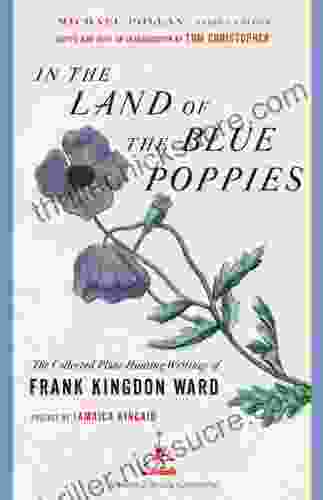
 Dillon Hayes
Dillon HayesIn The Land Of The Blue Poppies: A Literary Journey to...
Prologue: A Tapestry of...

 Eliot Foster
Eliot FosterCollege University Writing Super Review Flash Card Books:...
College University...
4.7 out of 5
| Language | : | English |
| File size | : | 8951 KB |
| Text-to-Speech | : | Enabled |
| Screen Reader | : | Supported |
| Word Wise | : | Enabled |
| Print length | : | 460 pages |
| Lending | : | Enabled |


